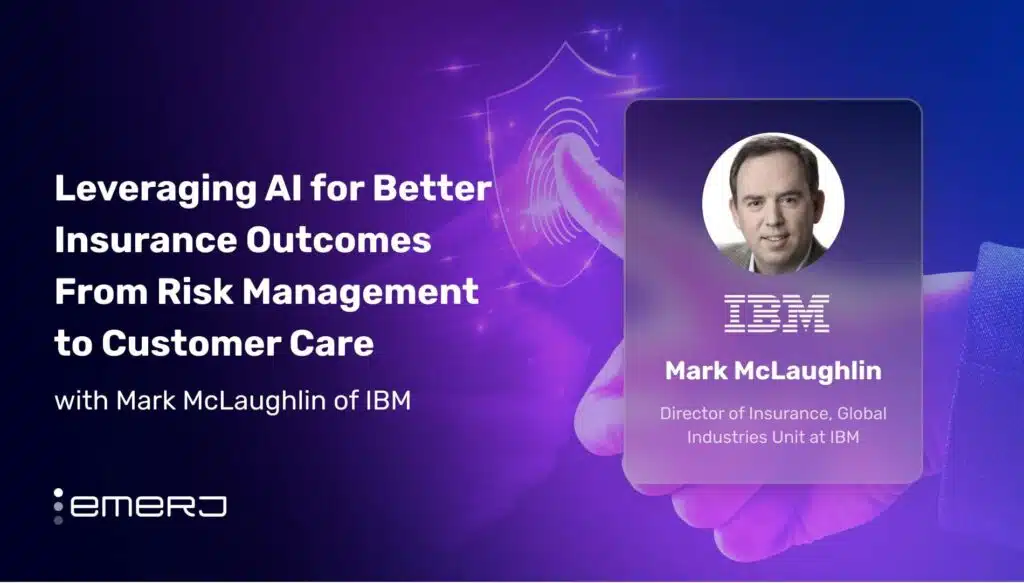This interview analysis is sponsored by OneTrust and was written, edited, and published in alignment with our Emerj sponsored content guidelines. Learn more about our thought leadership and content creation services on our Emerj Media Services page.
The telecommunications industry faces significant challenges in data integration and analytics. A study published by Malaysia University of Science and Technology highlights that the vast amounts of data generated by telecom companies often reside in fragmented and siloed systems, making comprehensive analysis difficult.
Additionally, data silos in organizations can lead to significant inefficiencies and increased costs. An MIT Center for Information Systems Research (CISR) study highlights how fragmented data across different systems and departments can limit collaboration, hinder decision-making, and prevent organizations from leveraging their full data potential. When data is siloed, it becomes difficult to gain a holistic view, leading to inefficiencies and missed opportunities for innovation and optimization, particularly when trying to apply AI or data analytics across the organization.
The study also states that sharing internal data across departments drives significant ROI by improving decision-making, which in turn enhances profitability and customer satisfaction.
Emerj Senior Editor Matthew DeMello sat down with Moutie Wali, Director of Digital Transformation and Integrated Planning of Telus, to talk about the need for organizations to balance AI access with governance, unify siloed data for better decision-making, and securely integrate externally trained AI with internal systems.
This article examines two critical insights for data governance and telecom leaders alike from their conversation:
- Unify data across systems: Integrate siloed data into a unified platform to enable AI-driven insights through comprehensive data correlation.
- Balancing AI access and governance: Organizations should implement clear guidelines that enable employees to experiment with AI while maintaining data security, fostering innovation, and accelerating impactful use cases.
Listen to the full episode:
Guest: Moutie Wali, Director of Digital Transformation and Integrated Planning, Telus
Expertise: Innovation, Digital Transformation, AI
Brief Recognition: Moutie Wali is the Director of Digital Transformation and Integrated Planning at TELUS, where he played a key role in streamlining complex planning processes, saving 7,200 employee hours annually. With an MBA in Organizational Leadership from the University of Victoria, Moutie has been with TELUS for 13 years, driving innovation and efficiency across the organization.
Unify Data Across Systems
Moutie emphasizes the importance of involving business owners and departments that create and own data when implementing AI solutions in organizations. These stakeholders are crucial because they understand the data, its privacy requirements, and its usability for AI applications. He highlights two key challenges and approaches:
- Balancing AI Training and Privacy: Organizations must leverage robust internal security systems like firewalls and governance policies to protect sensitive data. However, AI engines often require external training on internet-scale data to achieve advanced decision-making capabilities. The challenge lies in bringing these trained AI engines into the organization without exposing internal data to the internet, ensuring both security and utility.
- Retrieval-Augmented Generation (RAG): This solution involves training AI externally and then securely deploying it internally behind firewalls. This approach allows the AI to access internal data to make decisions and retrieve insights while safeguarding data privacy. Implementing such systems demands cross-functional collaboration among IT, security, and business teams.
Further, he explains the two steps required to integrate AI within organizations effectively. First, they need to identify where their data resides and create systems such as data lakes or unified data platforms.
“That work is extensive because some of the data is rightly able or exposed to you. For example, you can find those data somewhere in the organization in the digitized format, but some of this data is actually in fragmented or unindicated systems. So, it requires a system that allows you to connect to various sources of data and expose that data to the same AI engine to be able to enhance the AI capability or decision-making. We always say this, and it’s always true that you need big data to get AI to work better. You need as much data as possible.”
– Moutie Wali, Director of Digital Transformation and Integrated Planning, Telus
Moutie also speaks about the challenges large organizations face when adopting AI, particularly regarding data integration. He explains that crucial information such as financial, inventory, consumer, and billing data often resides in siloed, legacy systems that do not communicate with each other. While many AI vendors offer solutions tailored to their systems, these fail to address the broader need for interconnectivity.
To overcome this, organizations must create a unified data fabric that consolidates and integrates data from all sources before exposing it to AI. Without this, siloed AI implementations will limit the organization’s ability to derive meaningful insights, as they lack the context provided by data correlation.
He says that by connecting data from multiple sources, organizations can extract deeper insights and unlock impactful use cases. Siloed systems may offer partial solutions, but only a comprehensive, interconnected approach will maximize AI’s potential to deliver value.
Balancing AI Access and Governance
Moutie also shares with Emerj the importance of balancing AI access and governance. Organizations adopt different strategies: some restrict AI usage entirely due to security concerns, while others democratize access, allowing employees to experiment with AI tools. He warns against complete restrictions, as employees may circumvent rules by using personal devices, which poses security risks.
Instead, he suggests organizations establish clear guidelines that enable experimentation while maintaining control over data security. Allowing teams to explore and trial AI capabilities fosters innovation and accelerates the discovery of impactful use cases.
“Business owners need to own the use cases, not just the CIO organization. It cannot be just one department; it cannot be just a CIO or IT. All business owners must be able to access AI capabilities and then use the data that sits in a data lake to make decisions. So, democratizing access to AI is a challenging thing. You have to really find the right balance between, I want to be secure, I want to be safe with my organization, but I also do not want to be lagging behind in terms of, you know, creating insights and using AI to accelerate growth with my organization.”
-Moutie Wali, Director of Digital Transformation and Integrated Planning, Telus
Moutie notes that one of the challenges in regulating AI is distinguishing between genuine risks and unfounded fears or myths. These disparities require experts with deep AI knowledge and experience to work closely with regulators to guide decision-making.
He emphasizes that regulation should not be a unilateral effort by regulatory bodies. Instead, it must create collaborative communities that include industry leaders, AI experts, and policymakers. Without such collaboration, there is a risk of overregulation, which could hinder AI’s ability to drive economic growth and improve organizational capabilities.
He accepts that regulators face pressure to act quickly because of the rapid pace of AI development. However, they must also carefully balance two key objectives: protecting citizens from potential risks posed by AI and fostering economic growth by leveraging AI’s transformative potential. Achieving this balance requires input from industry leaders who can help regulators understand AI’s capabilities and limitations while advocating for policies that enable innovation.
In the end, he shares the telecom industry’s advantage in AI adoption due to its maturity in data management. Having moved to the cloud over a decade ago and established strong data security and sovereignty governance, telecom companies can seamlessly integrate AI while adhering to regulatory requirements.
Telecom use cases, such as improving customer experience and network health, are lower risk compared to industries like healthcare, where AI decisions could be life-threatening. Testing for these use cases allows for safer experimentation and early adoption of AI without significant regulatory hurdles, enabling the industry to innovate while minimizing risks.


















